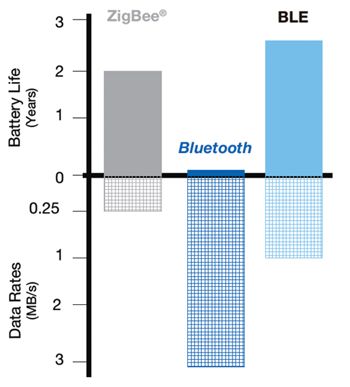Bluetooth® Low Energy (BLE) may not be part of your electronic designs just yet, but chances are it will be soon. This wireless connectivity technology has experienced explosive growth over the last three years. It now provides low-power connectivity to millions of electronic devices, such as smart watches, fitness trackers, smartphone accessories, and medical monitors. Thanks to upcoming technical enhancements, BLE is poised to become even more pervasive in the next generation of consumer electronics and the emerging Internet of Things.
Many of the enhancements have been incorporated in Bluetooth 4.1, a recent update to the core specification. Among them are support for more efficient bulk data transfers, greater flexibility in communications between devices, simultaneous dual-mode roles, and the first steps toward IP-based communications. Taken together, these technical improvements make BLE even more attractive from power consumption, performance, and cost standpoints.
In addition to the enhancements outlined in Bluetooth 4.1, the BLE chips themselves have been continuously improving. Thanks to efficiency improvements, transmission power consumption in the second generation of BLE will fall by about 66 percent with no loss of range or performance.
With all the recent changes to BLE and with more to come soon, it is a good time to take a look at where the technology stands today and where it is heading.
BLE basics
For wireless communication devices that have been optimized for low power consumption rather than maximum data transfer rates, BLE fits the bill perfectly. It consumes as little as one-hundredth the average power required by Bluetooth Classic. BLE’s peak current draw is as low as 15 mA, compared to 40 mA or more for Bluetooth Classic. With such thrifty current consumption, BLE can run on a single coin-cell battery for months or years, depending on the application.
BLE achieves its low power consumption primarily by keeping its radio turned off most of the time. BLE scans only three advertising channels, and its radio awakens only to send or receive short bursts of data, with small packet sizes from 8 to 27 octets. BLE also sets up connections very quickly, which further minimizes the radio’s on time. BLE can transmit authenticated data in as little as 3 ms, versus the 1000 ms typical for Bluetooth Classic.
For more detail: Moving Forward With Bluetooth Low Energy

